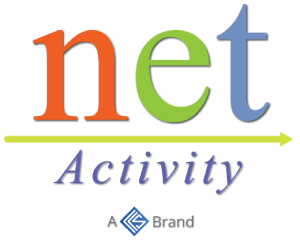Improve Internet Security with These Easy Tips
With over four billion internet users around the globe totaling roughly 59% of the population, the internet is rife with opportunities for hackers to steal users’ information. And with technology constantly evolving and the internet growing, it’s not likely to get safer anytime soon. That’s why it pays to take extra precautions when surfing the web. We’ve compiled these three easy tips that can amp up your online security.
Tip 1: Use HTTPS
Short for Hypertext Transfer Protocol Secure, HTTPS indicates that a website has an extra layer of security for its users. This layer encrypts data exchanged between a user’s browser and the web server that delivers the data requested by the user. To use a simpler comparison, imagine someone tapping your landline, but instead of getting to listen in on your conversations, they’ll hear people speaking in tongues instead.
In August 2014, Google Chrome, the world’s most popular browser, announced that having HTTPS makes your website rank higher in its search algorithm. And since October 2017, the browser began flagging non-HTTPS websites as not secure whenever users try to fill out something as simple as a contact form on it. In July 2018, Chrome started showing a “not secure” warning on any website that does not implement HTTPS, whether or not users are filling out a form there.
Because of Google’s measures, the security protocol has been widely adopted. Even if your website does not contain or ask for sensitive information, implementing HTTPS engenders trust and a sense of security among internet users, while remaining on HTTP will make web visitors abandon or avoid you sooner or later.
Tip 2: Embrace multifactor authentication (MFA)
Since account credentials can be easily stolen via phishing attacks, username and password combos are no longer enough to keep bad actors at bay. To ensure that the one accessing an account is truly that account’s owner, additional identity authentication steps must be implemented.
These steps can involve the use of the account holder’s device — the one logging in must first verify their phone number, receive a one-time password on their smartphone, then enter that code in the access portal before the code’s validity lapses. Alternatively, MFA may ask for a face, retina, voice, or fingerprint scan for authentication.
MFA can be a bit of a hassle for your internal and external users, but a little inconvenience is a small price to pay for immensely effective cybersecurity.
Tip 3: Update browsers and devices
Did you know that dated versions of browsers, operating systems, and even other software packages can create an easy entry point for hackers? Often, new updates are created specifically to fix security holes. However, people tend to procrastinate and leave applying updates for another day. Hackers take advantage of this by searching for outdated devices to infiltrate while their victims watch YouTube on last year’s version of Firefox.
Yes, installing an update might take 15 minutes of your time, but this time investment can pay dividends in terms of preventing a security breach that could cost you or your business thousands.
Looking for more tips to boost your internet security? Get in touch to find out how we can help.














